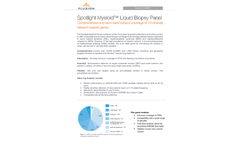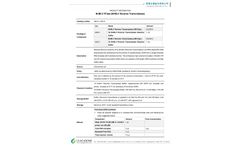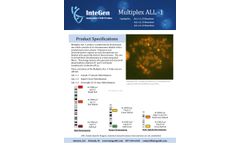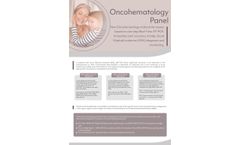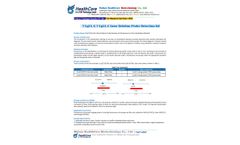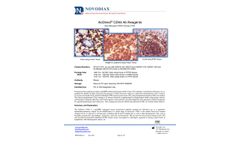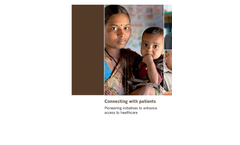leukemias Downloads
7 downloads found
The Spotlight Myeloid Panel combines content from peer-reviewed publications and other sources to offer comprehensive and exon-level hotspot coverage of 23 clinically-relevant genes implicated in acute myeloid leukemia (AML), myelodysplastic syndrome (MDS) and myeloproliferative neoplasms (MPN). ...
Moloney Murine Leukemia Virus (M-MLV) Reverse Transcriptase is an RNA-dependent DNA polymerase that synthesizes the first strand of complementary cDNA from a single-stranded RNA template with hybridized primer. This kit features high activity formulation of M-MLV RT and 5X reverse transcription buffer which are capable of full-length cDNA synthesis and high cDNA yields. ...
Multiplex ALL-1 probe is a multicolored chromosome mix which consists of six chromosomes labeled with a predominant color scheme. Telomeres and pericentromeric regions on each chromosome are labeled with spectrally distinct fluorochrome. The mix is viewed three chromosomes at a time using dual filters. This design detects all numerical and structural abnormalities related to B- and T-cell Acute ...
In patients with Acute Myeloid Leukemia (AML), qRT-PCR shows significant sensitivity in the detection of the translocations or other chromosomal abnormalities. It represents an important tool in the screening of acute leukemia providing useful information for the diagnosis and prognosis and allowing patients to be assigned to the appropriate risk group for management and ...
Translocations in bands 11q23.3-11q24 are associated with several human cancers, including acute lymphoid and acute myeloid leukemias (AML) and Ewing's sarcoma. ...
Cluster of Differentiation 45 (CD45) pHRP Anti-Human Staining Kit immunohistochemistry (IHC) reagent is for use on frozen and formalin-fixed-paraffin-embedded tissues. The CD45 antigen is a protein which was originally called Leukocyte Common Antigen and recognizes an antigen found on lymphoid cells. Anti-CD45 antibody is a useful tool for identifying tumor cells of lymphoid origin. It is ...
Patient assistance programs for both patented and unpatented medicines can reduce barriers to access, as demonstrated by our pioneering initiatives for malaria and leukemia. Nevertheless, research breakthroughs and patient assistance programs can make little impact if there is no solid health system to reach patients.HIV/AIDS, malaria and TB received nearly 72% of the total R&D ...

